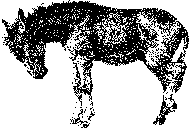
8/29/2009 7:46 PM
By Elizabeth Weise, USA TODAY
SAN FRANCISCO --
Got milk? If you do, take a moment to ponder the true oddness of being able to drink milk after you're a baby.
No other species but humans can. And most humans can't either.
The long lists of food allergies some people claim to have can make it seem as if they're just finicky eaters trying to rationalize likes and dislikes. Not so. Eggs, peanuts, tree nuts, fish, shellfish soy and gluten all can wreak havoc on the immune system of allergic individuals, even causing a deadly reaction called anaphylaxis.
But those allergic reactions are relatively rare, affecting an estimated 4% of adults.
Milk's different.
First off, it's not actually an allergy in that there's not an immune response.
People who are lactose intolerant can't digest the main sugar lactose found in milk. In normal humans, the enzyme that does so lactase stops being produced when the person is between two and five years old. The undigested sugars end up in the colon, where they begin to ferment, producing gas that can cause cramping, bloating, nausea, flatulence and diarrhea.
If you're American or European it's hard to realize this, but being able to digest milk as an adult is one weird genetic adaptation.
It's not normal. Somewhat less than 40% of people in the world retain the ability to digest lactose after childhood. The numbers are often given as close to 0% of Native Americans, 5% of Asians, 25% of African and Caribbean peoples, 50% of Mediterranean peoples and 90% of northern Europeans. Sweden has one of the world's highest percentages of lactase tolerant people.
Being able to digest milk is so strange that scientists say we shouldn't really call lactose intolerance a disease, because that presumes it's abnormal. Instead, they call it lactase persistence, indicating what's really weird is the ability to continue to drink milk.
There's been a lot of research over the past decade looking at the genetic mutation that allows this subset of humanity to stay milk drinkers into adulthood.
A long-held theory was that the mutation showed up first in Northern Europe, where people got less vitamin D from the sun and therefore did better if they could also get the crucial hormone (it's not really a vitamin at all) from milk.
But now a group at University College London has shown that the mutation actually appeared about 7,500 years ago in dairy farmers who lived in a region between the central Balkans and central Europe, in what was known as the Funnel Beaker culture.
The paper was published this week in PLoS Computational Biology.
The researchers used a computer to model the spread of lactase persistence, dairy farming, other food gathering practices and genes in Europe.
Today, the highest proportion of people with lactase persistence live in Northwest Europe, especially the Netherlands, Ireland and Scandinavia. But the computer model suggests that dairy farmers carrying this gene variant probably originated in central Europe and then spread more widely and rapidly than non-dairying groups.
Author Mark Thomas of University College London's dept of Genetics, Evolution and Environment says: "In Europe, a single genetic change...is strongly associated with lactase persistence and appears to have given people with it a big survival advantage."
The European mutation is different from several lactase persistence genes associated with small populations of African peoples who historically have been cattle herders.
Researchers at the University of Maryland identified one such mutation among Nilo-Saharan-speaking peoples in Kenya and Tanzania. That mutation seems to have arisen between 2,700 to 6,800 years ago. Two other mutations have been found among the Beja people of northeastern Sudan and tribes of the same language family in northern Kenya.
There's been a lot of research over the past decade looking at the genetic mutation that allows this subset of humanity to stay milk drinkers into adulthood.
A long-held theory was that the mutation showed up first in Northern Europe, where people got less vitamin D from the sun and therefore did better if they could also get the crucial hormone (it's not really a vitamin at all) from milk.
But now a group at University College London has shown that the mutation actually appeared about 7,500 years ago in dairy farmers who lived in a region between the central Balkans and central Europe, in what was known as the Funnel Beaker culture.
The paper was published this week in PLoS Computational Biology.
The researchers used a computer to model the spread of lactase persistence, dairy farming, other food gathering practices and genes in Europe.
Today, the highest proportion of people with lactase persistence live in Northwest Europe, especially the Netherlands, Ireland and Scandinavia. But the computer model suggests that dairy farmers carrying this gene variant probably originated in central Europe and then spread more widely and rapidly than non-dairying groups.
Author Mark Thomas of University College London's dept of Genetics, Evolution and Environment says: "In Europe, a single genetic change...is strongly associated with lactase persistence and appears to have given people with it a big survival advantage."
The European mutation is different from several lactase persistence genes associated with small populations of African peoples who historically have been cattle herders.
Researchers at the University of Maryland identified one such mutation among Nilo-Saharan-speaking peoples in Kenya and Tanzania. That mutation seems to have arisen between 2,700 to 6,800 years ago. Two other mutations have been found among the Beja people of northeastern Sudan and tribes of the same language family in northern Kenya.








No comments:
Post a Comment